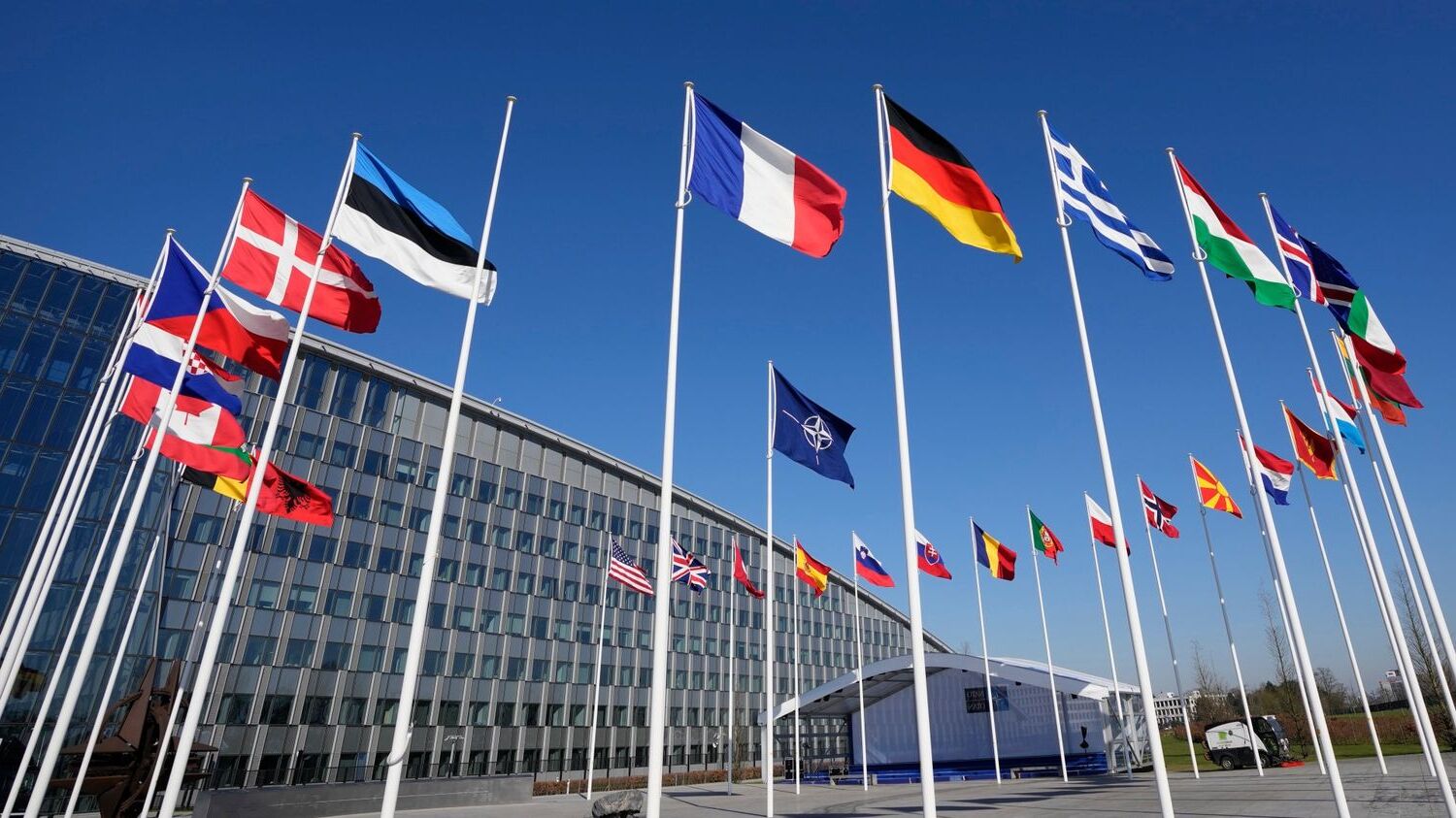
Why is NATO important? NATO, or the North Atlantic Treaty Organization, is a military alliance founded in 1949 to counter Soviet threats and promote European integration. It started with 12 countries and has grown to 32, including recent members like Finland and Sweden. NATO's core principle is collective defense, meaning an attack on one member is an attack on all. This was notably invoked after the 9/11 attacks. Beyond defense, NATO engages in peacekeeping, counter-terrorism, and cyber defense. It also supports global security through partnerships with over 40 countries and organizations like the UN and EU.
Key Takeaways:
- NATO was formed in 1949 to counter Soviet expansionism and promote European integration. It played a crucial role during the Cold War and continues to adapt to modern security challenges.
- NATO's commitment to global security includes defense spending, cyber defense, humanitarian assistance, and peacekeeping efforts. It fosters cooperation, stability, and preparedness for emerging threats.
The Birth of NATO
NATO, or the North Atlantic Treaty Organization, has been a cornerstone of global security since its inception in 1949. Let's dive into some fascinating facts about its origins and early years.
-
Founding Purpose: NATO was created to counter Soviet expansionism, prevent nationalist militarism in Europe, and encourage European political integration.
-
Post-WWII Context: Europe was in ruins after WWII, with 36.5 million Europeans dead, including 19 million civilians. Refugee camps and rationing were common, and infant mortality rates were alarmingly high.
-
Communist Threats: The Soviet Union supported communist movements across Europe, leading to the overthrow of Czechoslovakia's government in 1948 and the blockade of West Berlin.
-
Berlin Airlift: The Berlin Airlift was a massive operation that supplied West Berlin with essentials during the Soviet blockade, showcasing Allied resolve.
-
Marshall Plan: The U.S. funded the Marshall Plan, providing economic aid to Europe, fostering stabilization, and encouraging cooperation among European states.
-
Western Union and WEU: Western European democracies formed the Western Union in 1948, which later became the Western European Union in 1954, to enhance military cooperation.
NATO's Formation and Core Principles
NATO's foundation and guiding principles have shaped its role in global security. Here are some key facts about its establishment and core tenets.
-
NATO’s Founding: NATO was officially established on April 4, 1949, with 12 founding members, including the U.S., U.K., and Canada.
-
Article 5: Article 5 of the North Atlantic Treaty states that an armed attack against one member is considered an attack against all, committing members to collective defense.
-
Collective Defense: NATO's principle of collective defense means that an attack on one Ally is an attack on all, a principle invoked after the September 11 attacks.
Expansion and Membership
NATO has grown significantly since its inception, welcoming new members and adapting to changing geopolitical landscapes.
-
Expansion and Membership: NATO's first expansion was in 1952 with Greece and Turkey. Other notable additions include West Germany in 1955, Spain in 1982, and more recent members like Finland in 2023 and Sweden in 2024.
-
NATO’s Military Structure: NATO's military organization includes the Military Committee, Allied Command Operations (ACO), and Allied Command Transformation (ACT).
-
SACEUR: The Supreme Allied Commander Europe (SACEUR) has always been an American, starting with General Dwight D. Eisenhower in 1950.
-
NATO Secretary-General: The Secretary-General, always a European, chairs the North Atlantic Council, composed of ministerial representatives from member states.
NATO During the Cold War
NATO played a crucial role in maintaining stability during the Cold War, adopting strategies to deter Soviet aggression.
-
NATO’s Role in the Cold War: NATO's "Massive Retaliation" doctrine threatened nuclear response to Soviet attacks, deterring both sides from risk-taking.
-
Suez Crisis: The 1956 Suez Crisis highlighted the need for better political consultation among NATO members, leading to the NATO Science Programme.
-
Détente: In the 1960s, NATO embraced détente, a relaxation of tensions between the Western and Eastern blocs, despite ongoing Cold War hostilities.
Post-Cold War Evolution
After the Cold War, NATO transformed into a cooperative-security organization, engaging in peacekeeping and crisis management.
-
NATO’s Post-Cold War Era: NATO shifted focus to peacekeeping and crisis management, intervening in conflicts like the Bosnian War and Kosovo.
-
Partnership for Peace: Launched in 1994, this initiative engaged Central and Eastern European countries in NATO activities, promoting regional stability.
-
Kosovo Conflict: In 1999, NATO conducted a bombing campaign against Yugoslavian forces in Kosovo, marking a shift to humanitarian intervention.
Modern NATO Operations
NATO continues to adapt to modern security challenges, from counter-terrorism to cyber defense.
-
NATO’s Role in Afghanistan: For nearly 20 years, NATO trained and advised Afghan security forces to prevent the country from becoming a terrorist haven.
-
NATO’s Counter-Terrorism Efforts: NATO improves awareness, develops capabilities, and engages with partners to combat terrorism, including the NATO Mission Iraq.
-
Support for Ukraine: NATO provides non-lethal support to Ukraine and helps transition its military to modern NATO equipment.
-
Cyber Defense: Recognizing cyberspace as an operational domain, NATO helps Allies boost their cyber defenses through information sharing, education, and training.
NATO's Command Structure and Funding
Understanding NATO's command structure and funding mechanisms is crucial to grasping its operational capabilities.
-
NATO’s Command Structure: NATO's command structure includes two top-level Strategic Commands: ACO in Mons, Belgium, and ACT in Norfolk, Virginia, U.S.
-
Defense Spending: At the 2014 Wales Summit, NATO Allies pledged to spend 2% of GDP on defense by 2024, with 20% allocated to major equipment.
-
NATO Funding: NATO countries contribute to the Alliance's costs based on Gross National Income, covering operations, missions, facilities, and equipment.
Open Door Policy and Humanitarian Efforts
NATO's Open Door Policy and humanitarian efforts highlight its commitment to global security and stability.
-
Open Door Policy: NATO's founding principle allows any European country to join if it meets membership standards and obligations.
-
NATO’s Role in the Balkans: NATO's crisis management operations in the Balkans, including the Bosnian War and Kosovo conflict, promote regional stability.
-
NATO’s New Strategic Concept: In the 1990s, NATO adopted a strategy emphasizing dialogue, cooperation, and crisis management over collective defense.
-
NATO’s European Pillar: In 1996, NATO enhanced European security by offering Europe the capacity to act together without direct U.S. participation.
Scientific Cooperation and Cybersecurity
NATO's commitment to scientific cooperation and cybersecurity underscores its adaptability to modern challenges.
-
NATO’s Enlargement: NATO's membership has grown to 32 countries, with Finland and Sweden joining in 2023 and 2024, respectively.
-
NATO’s Humanitarian Efforts: NATO provides aid to countries affected by conflict or natural disasters and supports peacekeeping missions.
-
NATO’s Scientific Cooperation: The NATO Science Programme, established after the 1956 Sputnik launch, promotes scientific collaboration among member states.
-
NATO’s Language: NATO's official languages are English and French, reflecting its commitment to inclusivity and cooperation.
-
NATO’s Military Equipment: NATO owns a fleet of AWACS surveillance aircraft and RQ-4D "Phoenix" drones for monitoring security threats.
-
NATO’s Cybersecurity Measures: NATO enhances cyber defenses through information sharing, education, and training, with experts ready to assist member states.
Counter-Piracy and Middle East Engagement
NATO's efforts in counter-piracy and Middle East engagement demonstrate its global reach and commitment to security.
-
NATO’s Counter-Piracy Efforts: NATO conducts counter-piracy operations in the Mediterranean and other regions to protect shipping lanes and prevent piracy.
-
NATO’s Role in the Middle East: NATO advises and assists Iraqi security forces through the NATO Mission Iraq, aiming to stabilize the country and prevent ISIS/Daesh's return.
-
NATO’s Support for Global Security: NATO collaborates with over 40 partner countries and organizations like the UN, EU, and African Union to promote global stability.
-
NATO’s Financial Contributions: NATO countries share the financial burden of maintaining the Alliance's operations and missions based on Gross National Income.
Defense Spending and Cyber Defense Exercises
NATO's focus on defense spending and cyber defense exercises highlights its commitment to maintaining robust military capabilities.
-
NATO’s Defense Spending Targets: NATO Allies aim to spend 2% of GDP on defense by 2024, with 20% allocated to major equipment, enhancing military capabilities.
-
NATO’s Cyber Defense Exercises: NATO conducts regular cyber defense exercises to prepare member states for cyber-attacks and develop effective response strategies.
Humanitarian Assistance and Peacekeeping
NATO's humanitarian assistance and peacekeeping efforts underscore its dedication to global peace and security.
-
NATO’s Humanitarian Assistance: NATO provides aid to countries affected by conflict or natural disasters, supporting various humanitarian missions.
-
NATO’s Peacekeeping Operations: NATO's peacekeeping operations, including those in the Balkans, aim to stabilize regions and promote peace and security.
Crisis Management and Strategic Concepts
NATO's crisis management framework and evolving strategic concepts prepare the Alliance for modern security challenges.
-
NATO’s Crisis Management: NATO has a robust crisis management framework, conducting operations in the Balkans and Afghanistan to respond to security threats.
-
NATO’s Strategic Concept: NATO's strategic concept has evolved from a defensive posture to one emphasizing dialogue, cooperation, and crisis management.
European Integration and Global Partnerships
NATO's role in European integration and global partnerships highlights its commitment to fostering cooperation and stability.
-
NATO’s European Integration: NATO has encouraged European states to work together on security issues, fostering greater cooperation and stability.
-
NATO’s Global Partnerships: NATO collaborates with over 40 partner countries and organizations like the UN, EU, and African Union to promote global security.
Cybersecurity Framework and Future Agenda
NATO's comprehensive cybersecurity framework and future agenda ensure the Alliance remains prepared for emerging threats.
-
NATO’s Cybersecurity Framework: NATO's cybersecurity framework includes information sharing, education, and training to protect member states from cyber threats.
-
NATO’s Future Agenda: NATO's future agenda focuses on developing a strategic concept that balances collective defense and crisis management, promoting stability in Europe.
NATO's Ongoing Impact
NATO has come a long way since its founding in 1949. Initially formed to counter Soviet threats, it now tackles a wide range of global security issues. From collective defense to cybersecurity and counter-terrorism, NATO adapts to new challenges. The Partnership for Peace initiative and support for Ukraine highlight its commitment to stability. With 32 member countries and growing, NATO's Open Door Policy ensures continued expansion. The alliance's focus on defense spending, scientific cooperation, and humanitarian efforts underscores its multifaceted role. As NATO evolves, it remains a cornerstone of international security, ready to face future threats and promote peace.
Frequently Asked Questions
Was this page helpful?
Our commitment to delivering trustworthy and engaging content is at the heart of what we do. Each fact on our site is contributed by real users like you, bringing a wealth of diverse insights and information. To ensure the highest standards of accuracy and reliability, our dedicated editors meticulously review each submission. This process guarantees that the facts we share are not only fascinating but also credible. Trust in our commitment to quality and authenticity as you explore and learn with us.


